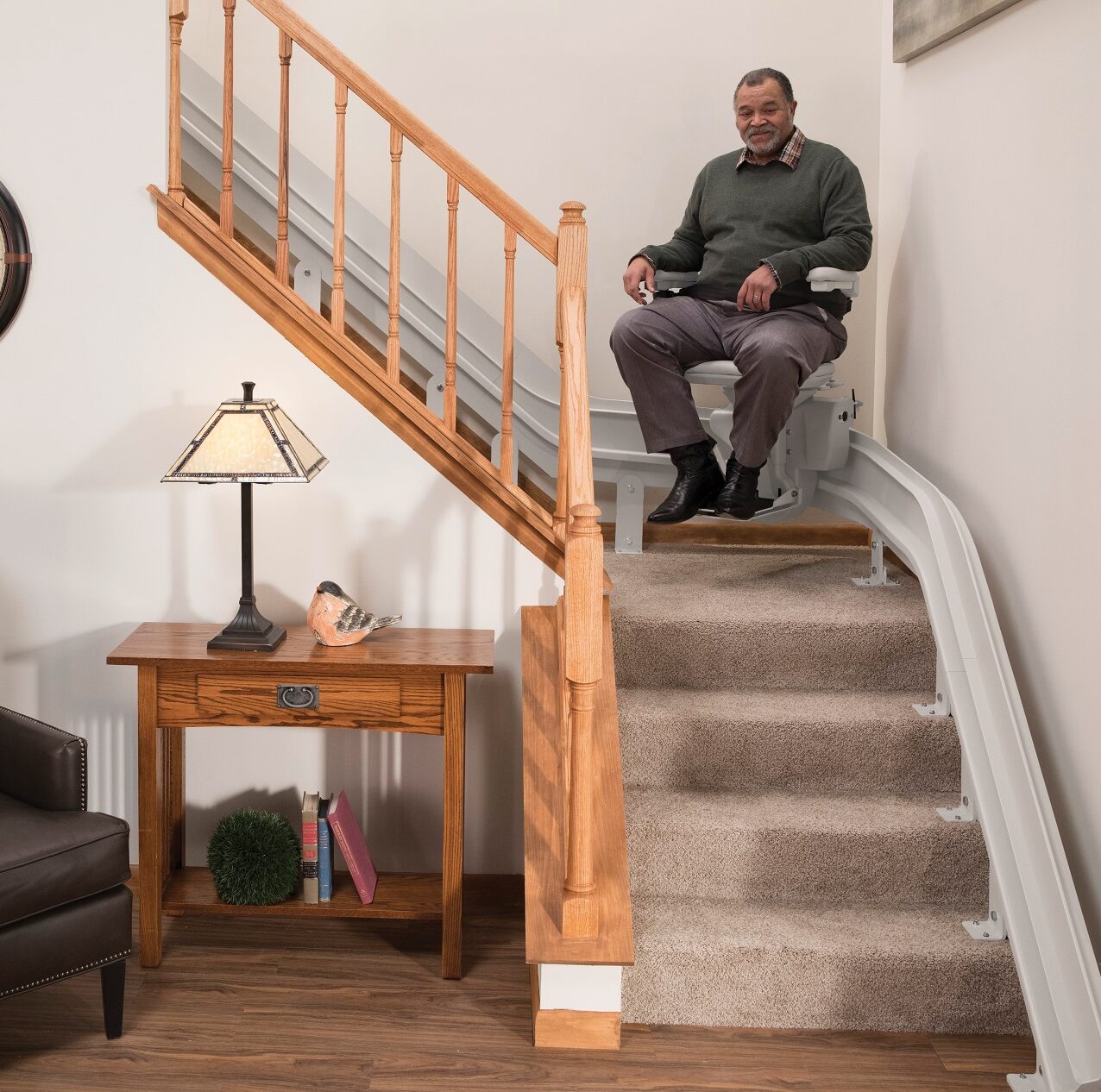If you have been diagnosed with COPD- Chronic obstructive pulmonary disease- you may struggle with everyday ADLs. A stairlift provides worthwhile benefits that you may not have considered- and makes simple activities of daily living much easier, safer, and comfortable.
Have you been diagnosed with Chronic obstructive pulmonary disease or COPD? If so, you know how difficult everyday tasks can be and how it can be a challenge to cope with the breathlessness, cough, and pain that accompany this condition. One way to improve everyday quality of life is with mobility equipment, like lifts and seats, that reduce exertion, improve coordination, and lessen the fatigue of getting around. This relief and mobility assistance may even contribute to fewer flare-ups and less frequency of COPD symptoms!
Have you been diagnosed with COPD? A stairlift may help you in these worthwhile ways:
Chronic Obstructive Pulmonary Disease (COPD)
Chronic obstructive pulmonary disease (COPD) affects the respiratory system and afflicts over 60 million people across the globe. COPD develops gradually, causing chest pain, a chronic cough, and loss of breath over time. Because of the breathlessness caused by COPD, mobility limitations may also be a repercussion of this disease. People with COPD usually have oxygen prescribed, as well as different types of respiratory and pulmonary therapy and rehab, with the goal of helping patients cope with this debilitating, incurable disease.
Mobility and COPD
COPD dramatically impacts mobility. Since COPD causes breathlessness and chest pain, exertion can be risky. The use of mobility aids, including walkers, wheelchairs, and scooters, is integral to maintaining autonomy and getting around the home safely.
In fact, mobility aids like these may be what prevents a nasty fall, hospitalization, and rehabilitation- consider the following tools and aids in your own home:
Some mobility options that make sense with COPD include:
Walkers
For patients with COPD, walkers are a pragmatic mobility aid that is easy to use and inexpensive to buy. Rolling walkers or “rollators” make the most sense as they require the least exertion, and with a seat, they provide relief as needed for fatigue.
Rolling walkers also can be modified with baskets to carry oxygen, making this a sensible solution for someone with a respiratory illness. Conventional walkers without wheels are less practical as they lack the same capacity to carry and use oxygen when walking- plus, a seat really is key. Go with a rollator.
Wheelchairs
Anyone that is debilitated by COPD may choose to use a wheelchair. These provide a seat, again, which helps curb exertion and breathlessness. Oxygen can be transported by the person using the chair, either over the back of the chair or on their lap. Be careful not to tangle oxygen tubes in the spokes of the wheels! Electric wheelchairs have a distinct advantage over manual ones, simply by virtue of the labor involved in using the chair. A manual chair is better left as a transport chair in specific situations, not as a means of accessibility in everyday life. In this instance, an electric wheelchair makes the most sense and is clinically indicated.
Scooters
Sure, electric scooters are a lot like wheelchairs but if you have COPD, a scooter may not be the best mobility option. When you use an electric wheelchair, you operate it with a hand-held control; a scooter has handbrakes and handlebars, requiring some dexterity and effort on the user’s part. Scooters may also be more difficult to maneuver around the home environment, with less of a buffer than a wheelchair. Talk to your provider who knows you best about a referral, but depending on your distinct preferences, a scooter may not be the way to go.
Stairlifts and COPD
So, what about a stairlift? A stairlift provides a way for the user to go up and down stairways and steps in the home, without exertion or risks of a fall. There are essentially two parts involved in a stairlift: a track and a motorized seat that travels along the track.
Some other benefits of a stairlift when living with COPD are:
- Stairlifts renew a sense of safety and security in the home- particularly for people that may have previously experienced a fall.
- Stairlifts are very reliable and typically have a back-up energy source.
- Stairlifts are very easy to use and to adapt to.
Stairlifts can help the user regain access to upstairs areas of the home, like bedrooms and bathrooms, which can lead to increased feelings of independence and autonomy. These lifts may be an investment in your future aging in place, providing some security surrounding staying in your own home later. Talk to your loved ones and providers about the home environment and ways to make it safe and accessible.
Talk to the team at Pacific Mobility about mobility aids and solutions to make life a lot easier. Call or visit today.
President, Husband, Father, Grandfather Graduate of UC Davis- Bio Sci Major- Go Aggies! Jeff has extensive experience in all of Pacific Mobility’s products and services, and specializes in accessibility products as well as stairlifts, ceiling lifts and custom wheel chairs. His hobbies include spending time with family, gardening, mountain biking, exercising and off road motorcycle riding.
24 years as Owner/President of Pacific Mobility Center – selling, installing, and servicing stairlifts, porch lifts, ceiling lifts, pool lifts, handicap ramping, specialty wheelchairs, scooters, power wheel chairs, and other power mobility devices
Certified Environmental Access Consultant since 2008
Licensed General Contractor since 1998
Certified Aging in Place Specialist since 2016
Board Member for Home Access Professionals
Member of Association of Members of the Accessibility Equipment Industry (AEMA)




